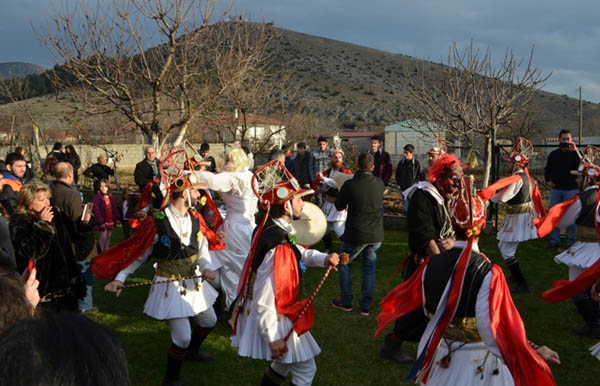Project elements
| Scientific Manager: | Maria Papapavlou |
|---|---|
| Main researchers: | Ioannis Tsekouras |
| Main organization: | National and Kapodistrian Univercity of Athens - Laboratory of Ethnomusicology and Cultural Anthropology |
| Partner organizations: | |
| Fundding: | Tsagadas Endowment - Funding of research and postgraduate/doctoral studies in Byzantine and Modern Greek studies. |
| Website: | |
| Durtion: | 2023-24 |
The research focuses on studying the impacts of UNESCO’s intangible cultural heritage policies on contemporary Greek culture through the examination of the beneficial custom “Momogéria” or “Kotzamania”. These are Pontic carnival events of the Twelve Days of Christmas in the Pontic villages of Kozani. In 2016, the “Momoeria” of Kozani were included in UNESCO’s international list, which has influenced:
- the performance, organization, and conduct of the events,
- the dance, musical, lyrical/linguistic elements related to the customs,
- the actions and dynamics of the Pontic associations and communities involved
- in the “Momoeria”,
- the representation and projection of Pontic tradition as a component of
- contemporary Greek culture, and
- the touristic promotion of the custom and any related economic activities.
The research aims to study these themes based on field ethnographic research in Kozani, conducting interviews, and studying archival material.
Momo(g)eria or Kotzamania
The terms “momoeria, momogeria, momogeroi, kotzamania, or kotzamanoi” refer to disguised participants of Pontic dance and theatrical events, which take place during the Twelve Days of Christmas (December 25th to January 6th). These names are collectively used for the customs as a whole. The beneficial custom of the twelve-day period researched by the laboratory is the version performed in eight Pontic villages of Kozani and Ptolemaida. These communities (Agios Dimitrios-Ryakio, Alonakia, Asvestopetra, Karyochori, Komnina, Protochori, Skiti, Tetralophos) were created by Pontic refugees from the Matsouka province of Eastern Pontus, specifically from the area and town of Liveras. The Momogéria of Livera, or the Livera variant as known in Pontic folklore, includes two groups of performers: twelve dancers dressed in costumes reminiscent of Evzones who guard two brides, who are young men disguised in bridal gowns, and a theatrical troupe consisting of 6-7 members with distinct roles in disguise (doctor, policeman or judge, bear, merchant, old woman, old man, devils). During the beneficial custom, the twelve dancers with the brides, following the trail of the two devils, visit all the houses in the village (or those that accept) and perform a dance based on a specific choreography (involving a series of movements), which is mimetic of battle. The theatrical troupe follows, improvising comic and satirical sketches with many dances and pranks, based on specific mini-plot scenarios. The hosts and nearby spectators participate by celebrating with the momogéroi after the main dance, offering drinks and food, and attempting to steal one of the brides. Often during the carnival theatrical improvisations, momogéroi (dancers) and spectators also participate. The theatrical improvisations also often include references to current affairs. The Momogéria of Livera as performed in the eight aforementioned villages have been included in UNESCO’s international list of intangible cultural heritage since 2016.
Tsagadas Endowment
The Tsagadas Endowment is managed by the Special Account for Research Grants and is available according to the wishes of the benefactor Konstantinos Tsagadas for funding research and postgraduate/doctoral studies in Byzantine and Modern Greek studies. The funding of the research project “Tradition as an Intangible Deposit” occurs within the framework of the action “Research in Post-Classical Studies.”



